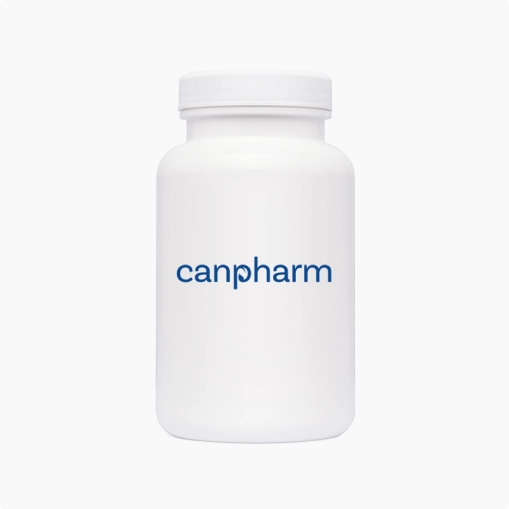
Kisqali (Ribociclib)
| Dose | Size & Price | Qty |
|---|
-
Description
-
Reviews (0)
-
Related Products
-
Related Conditions
Fact Table
| Fact Table | |
|---|---|
| Formula | C23H30N8O |
| License | FDA approved |
| Bioavailability | Not explicitly stated; however, it reaches peak plasma concentration in approximately 1-4 hours |
| Legal status | Prescription Drugs |
| Chemical Name | Ribociclib |
| Elimination half-life | 32 hours (range 16 to 66 hours) |
| Dosage (Strength) | 200mg (21 Tablets), 400mg (42 Tablets), 600mg (42 Tablets) |
| Pregnancy | Not recommended; can cause fetal harm |
| Brands | Kisqali |
| Protein binding | High (approximately 70%) |
| PubChem CID | 44631912 |
| MedlinePlus | a617008 |
| ChEBI | 134707 |
| ATC code | L01EF02 |
| DrugBank | DB11730 |
| KEGG | D10883 |
| Routes of administration | By mouth (tablets) |
Kisqali, scientifically known as Ribociclib, marks a significant advancement in the field of oncology, particularly in the treatment of certain types of breast cancer. Kisqali is a selective inhibitor of cyclin-dependent kinases 4 and 6 (CDK4/6), enzymes crucial for cell division. By inhibiting these kinases, Kisqali effectively halts the proliferation of cancer cells, thereby impeding tumor growth. The medication is specifically designed for postmenopausal women and men diagnosed with HR+/HER2- advanced or metastatic breast cancer as an initial endocrine-based therapy or following disease progression on endocrine therapy.
Before you buy Kisqali, it is crucial that you talk to your healthcare provider about potential side effects and Kisqali cost.
Directions
Kisqali is administered orally, with dosages typically ranging from 600 mg taken once daily for 21 consecutive days to 600 mg taken once daily for seven consecutive days, followed by a 7-day rest period, constituting a complete 28-day cycle. This regimen is often combined with an aromatase inhibitor or fulvestrant, depending on the patient's specific treatment history and disease progression. Patients are advised to take Kisqali at approximately the same time each day, with or without food. Swallow the tablets whole; do not chew, crush, or split them.
Ingredients
Kisqali uses Ribociclib as its active ingredient.
Cautions
Before starting Kisqali, patients should discuss their entire medical history with their healthcare provider, especially any history of heart disease, liver problems, or long QT syndrome.
Regular monitoring of blood counts and liver function tests is recommended to detect potential adverse effects early.
Kisqali can cause fetal harm; therefore, women of childbearing potential should use effective contraception during treatment and for at least three weeks after the last dose. Breastfeeding is not recommended during treatment and for at least three weeks following the previous dose of Kisqali.
Interactions
Kisqali can interact with various medications, potentially affecting its efficacy or increasing the risk of adverse effects. These interactions may include, but are not limited to, strong CYP3A inhibitors or inducers, which can significantly alter Ribociclib plasma concentrations. Patients should inform their healthcare provider of all medications, supplements, and herbal products they are currently taking to avoid harmful interactions.
Side Effects
While Kisqali is a targeted therapy designed to minimize harm to healthy cells, side effects can occur.
Common side effects include:
- neutropenia (low white blood cell count)
- nausea
- fatigue
- diarrhea
- alopecia (hair loss)
- vomiting
- constipation
- headache
- and back pain
More severe side effects may include:
- QT prolongation (a heart rhythm disorder)
- Severe liver problems
- Severe neutropenia with fever or infection
Patients should report any side effects to their healthcare provider to manage them effectively.
Frequently Asked Questions about Kisqali
What is Kisqali?
Kisqali is a prescription medicine used to treat adults with hormone receptor (HR)-positive, human epidermal growth factor receptor 2 (HER2)-negative breast cancer that has spread to other parts of the body (metastatic).
How does Kisqali work?
Kisqali is a kinase inhibitor. A kinase is a protein in the body that helps control cell division. Kisqali works by interfering with the kinase to stop cancer cells from dividing and growing.
What is combination therapy?
Combination therapy refers to the use of Kisqali in combination with another medicine as the first hormonal-based therapy.
What results were seen in Kisqali's clinical trials?
The specific results of clinical trials for Kisqali can be found in the prescribing information.
What is overall survival?
Overall survival refers to the length of time that patients live after treatment.
What are the most common side effects of Kisqali?
The most common side effects of Kisqali include nausea, tiredness, diarrhea, hair loss, vomiting, constipation, and headache.
How can I manage side effects?
Side effects can be managed with the help of your healthcare provider.
How should I take Kisqali?
Kisqali is taken orally with or without food in combination with letrozole.
What should I avoid while taking Kisqali?
Patients should avoid eating pomegranates or grapefruits and their juices during treatment with Kisqali.
What if I take too much or miss a dose of Kisqali?
If you take too much or miss a dose of Kisqali, you should contact your healthcare provider.
